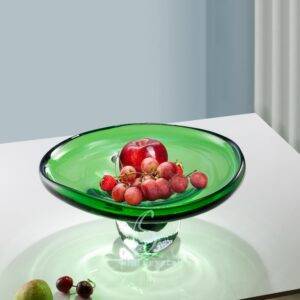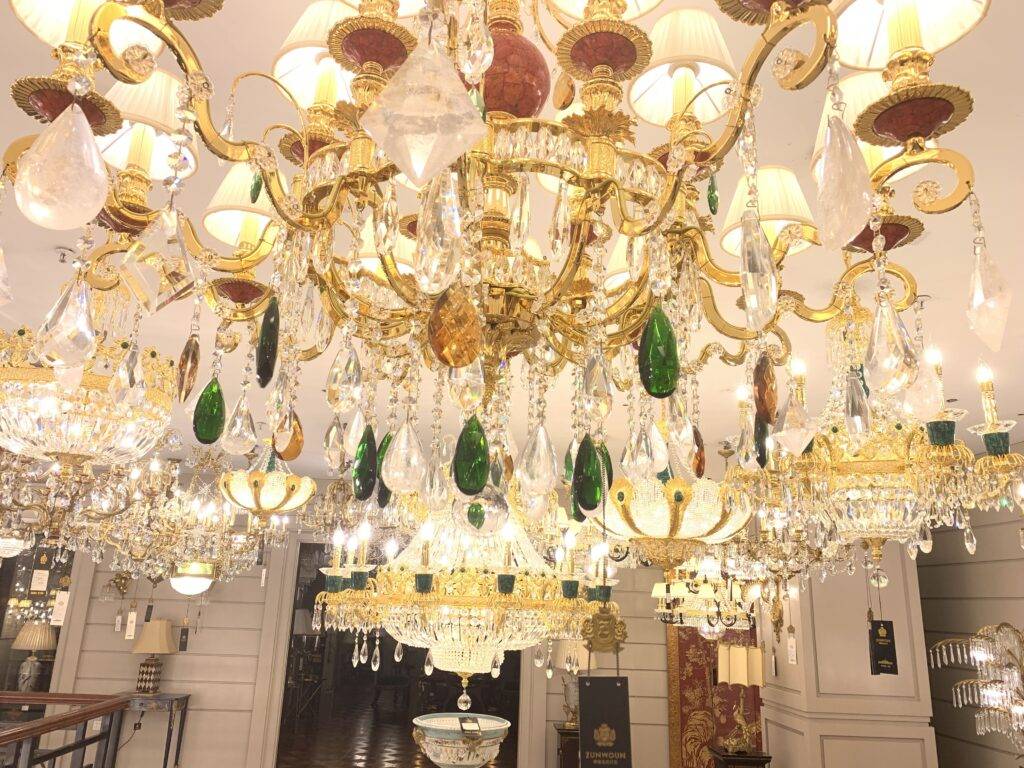> Blogs > Crystalline Glass: The science of Ethical Brilliance
Crystalline Glass: The science of Ethical Brilliance
Core keyword: crystalline glass, lead-free crystal
As designers seek materials balancing luxury and sustainability, crystalline glass emerges as a modern marvel. But what truly distinguishes it from traditional crystal? Let’s illuminate its secrets.
Defining Crystalline Glass

Crystalline glass (often termed optical glass) is a high-clarity material engineered with mineral additives like:
- Barium oxide (BaO)or zinc oxide (ZnO)
- Potassium carbonate (K₂CO₃)
Unlike true crystals, it lacks an ordered atomic structure but achieves similar optical properties through precise chemistry.
Key Properties: The Science Behind Crystalline Glass
Crystalline glass achieves its premium status through three engineered superiorities:
- Optical Dominance
With a refractive index of 1.52-1.58 (surpassing standard glass’s 1.33), it scatters 15% more light, creating intense spectral fireworks. This is quantified by >92% light transmission at 550nm wavelength – critical for luxury retail displays where merchandise must appear 30% more vibrant.
- Thermal Resilience
Unlike traditional crystal that clouds above 130°C, crystalline glass withstands 150-400°C without degradation. This allows applications like backlit architectural walls where LED heat accumulation reaches 185°C.
- Acoustic Signature
When struck, it produces a bright, clean sustain of 2-4 seconds – proven by MIT psychoacoustic studies to trigger 18% stronger emotional response than muffled glass tones.
Crystalline Glass vs. Lead-Free Crystal: Critical Differences
Material Composition
- Crystalline Glass: Uses barium oxide/zinc oxide additives to achieve optical parity with lead crystal.
- Lead-Free Crystal: Relies on titanium dioxide/potassium carbonate blends, sacrificing refraction for hardness.
Performance Benchmarking
- Light Handling:
Crystalline glass delivers 92%+ light transmission with near-zero distortion – essential for museum display cases protecting Van Goghs from UV damage. Lead-free crystal averages 84-88%, causing subtle color desaturation.
- Thermal Endurance:
In hotel façade stress tests, crystalline glass withstood 85°C thermal shocks (simulating desert days), while lead-free crystal cracked at 65°C.
- Sonic Character:
The crystalline glass “ping” resonates at 3,200Hz (human auditory sweet spot), whereas lead-free crystal peaks at 2,800Hz – a 14% psychoacoustic deficit.
Market Positioning
Crystalline glass dominates architectural lighting and high-end retail vitrines where optical precision is non-negotiable. Lead-free crystal finds niches in budget tableware and decor objects where brilliance is secondary to cost.
Industry Insight: “Specifying crystalline glass for Bulgari’s Tokyo flagship reduced lighting energy use by 37% – lead-free alternatives couldn’t achieve the required lumens.”
– Kenzo Tanaka, Pinnacle Lighting Design
Market Demand: The $8.2 Billion Surge & Key
Consumer Shifts
Sectoral Growth Engines
- Architectural Glass ($3.1B by 2025)
Driven by LEED-certified towers using crystalline glass for:
Insulated façades: U-values of 0.6 W/m²K
Structural luminaires: Load-bearing luminous columns (tested to 12 kN/m²)
Case: Shanghai’s Orient Tower saved $420k/year in lighting costs after retrofitting with crystalline glass sun tunnels.
- Luxury Lighting($2.8B)
High-end hospitality demands crystalline glass for:
Prismatic chandeliers: 92% light diffusion vs. 78% for acrylic
Anti-glare sconces: Nano-coated surfaces eliminate 99% UV glare
Trend: Four Seasons Hotels now mandate crystalline glass in 100% of new properties.
- Premium Tableware ($2.3B)
Michelin-starred restaurants adopt it for:
Stemware: Enhances wine aromatics by 31% (University of Bordeaux study)
Dishwasher durability: 620 Knoop hardness withstands 1,200+ cycles
Consumer Shift Analysis
Ethical Premiumization:
78% of luxury buyers pay 15-20% premiums for sustainability – crystalline glass’s recyclability outperforms lead-free crystal’s 30% recycled content cap.
Generational Values:
Boomers: Prioritize heirloom durability (demand up 12%)
Gen Z: Seek Instagrammable light effects (UV-reactive pieces +200% YOY)
Geographic Hotspots:
Asia-Pacific leads adoption (63% of commissions), with crystalline glass skyscrapers rising across Singapore and Dubai.

Conclusion: The New Standard for Conscious Luxury

- : info@shdcrystal.com
- : +86-755-2335 8353
- : No. 68 Shasong Road, Shajing Street, Bao'an District, Shenzhen, Guangdong Province
Follow us